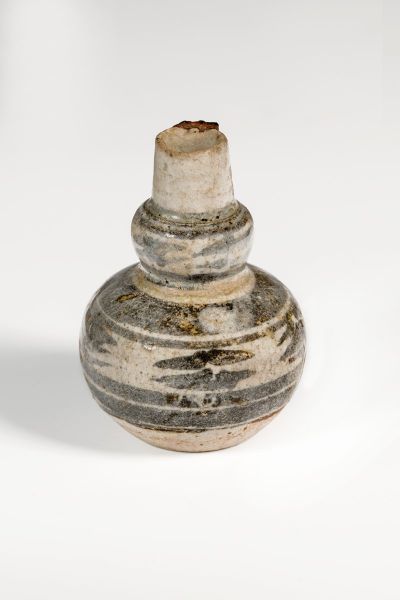
Calabash-shaped jarlet
| Accession Nr.: | 4906 |
|---|---|
| Type: | miniature; pottery |
| Date of production: |
14th – mid-16th century
|
| Place of production: |
| Materials/Techniques: | earthenware, underglaze iron |
|---|---|
| Dimensions: | height: 3. 2 cm diameter: 3. 8 cm |
Sawankhalok ceramics. Greenish-grey crackled celadon glazed earthenware vessel with brown pattern. The miniature jar vase with no base in the picture, judging by its shape, may have been a perfume container.
In the former town of Sawankhalok in northern and central Thailand, the pottery industry developed enormously in the period from the 14th to the mid-16th century. This was in part due to the sudden ban on the export of Chinese ceramics in 1371, during Ming dynasty rule. It was at this time that Vietnamese and Thai ceramics took the place of Chinese ceramics in Southeast Asian markets.
Typical pieces of the type were celadon glazed ceramics, learned from Chinese masters, but other types of glazes also existed.
The pieces known today have been found partly in field excavations and partly as cargo from sunken shipwrecks.
In the former town of Sawankhalok in northern and central Thailand, the pottery industry developed enormously in the period from the 14th to the mid-16th century. This was in part due to the sudden ban on the export of Chinese ceramics in 1371, during Ming dynasty rule. It was at this time that Vietnamese and Thai ceramics took the place of Chinese ceramics in Southeast Asian markets.
Typical pieces of the type were celadon glazed ceramics, learned from Chinese masters, but other types of glazes also existed.
The pieces known today have been found partly in field excavations and partly as cargo from sunken shipwrecks.